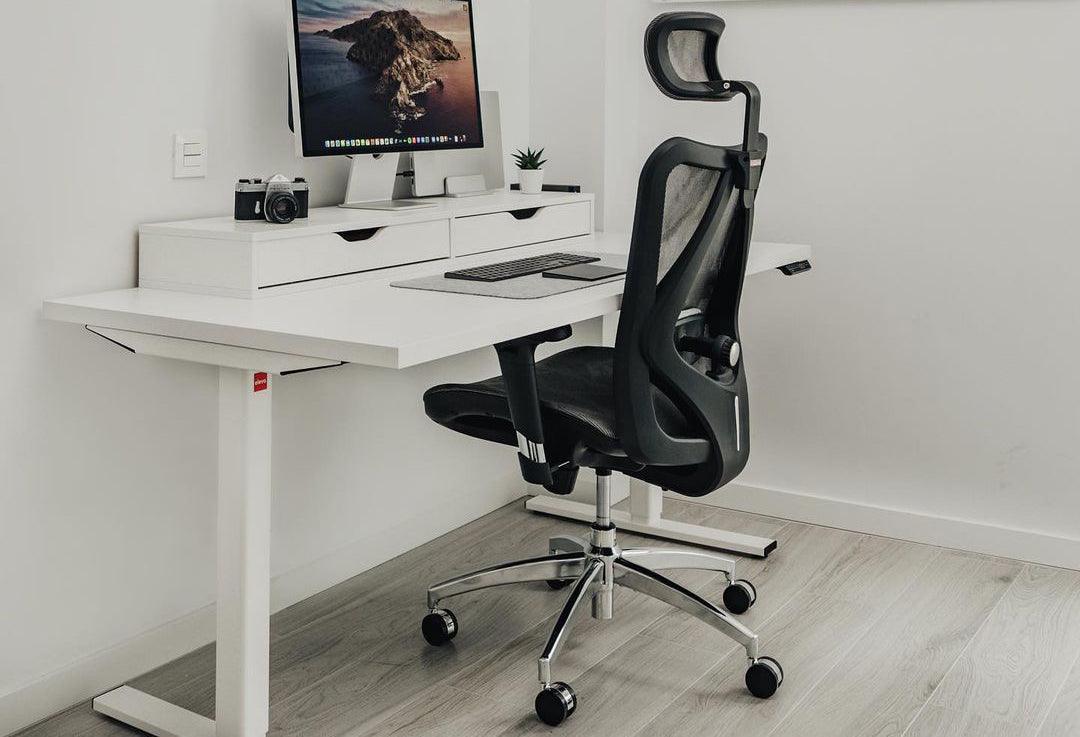Office chairs are a crucial component of any workplace, providing employees with the necessary support and comfort to perform their job effectively. However, not all office chairs are created equal, and ergonomic mesh office chair are no exception. While mesh chairs are becoming increasingly popular in modern offices, they come with their own set of issues that need to be addressed.
In this article, we will discuss six common problems with mesh office chairs for 2023 and provide practical solutions to overcome them. From comfort issues to durability concerns, we will cover everything you need to know to make an informed decision about purchasing a ergonomic mesh office chair.

Problem 1: Lack of Lumbar Support
One of the most common issues with mesh office chairs is the lack of lumbar support, which can lead to back pain and discomfort. Mesh chairs are designed to conform to the shape of the user's back, but they may not provide enough support for the lower back.
Solution: Look for a mesh ergonomic chair with adjustable lumbar support, which allows the user to adjust the height and depth of the support to their specific needs. Some chairs also come with a built-in lumbar support system that automatically adjusts to the user's posture.

Problem 2: Mesh Material Can Sag Over Time
Another issue with mesh office chairs is that the mesh material can sag over time, especially if the chair is used frequently. This can lead to a less supportive seating surface and may cause discomfort.
Solution: Choose a mesh office chair with a high-quality mesh material that is designed to withstand heavy use. Look for chairs with reinforced mesh and high-tensile strength, which will help prevent sagging over time.
Problem 3: Mesh Can Be Uncomfortable in Hot or Cold Temperatures
Mesh material can be uncomfortable in extreme temperatures, such as hot summers or cold winters. In hot temperatures, the mesh material can trap heat and cause sweating, while in cold temperatures, the mesh material can feel chilly and uncomfortable.
Solution: Look for a mesh office chair with a breathable mesh material that allows air to circulate freely. Additionally, consider using a seat cushion or a chair cover to provide additional insulation in cold temperatures.
Problem 4: Mesh Office Chairs Can Be Noisy
Another issue with mesh ergonomic chairs is that they can be noisy, especially when the user moves around in the chair. This can be distracting and disruptive to colleagues in a shared workspace.
Solution: Choose a mesh office chair with noise-reducing features, such as a sturdy frame and a stable base. Additionally, consider using a chair mat under the chair to help absorb sound and reduce noise levels.
Problem 5: Mesh Chairs May Not Be as Durable as Other Materials
While mesh office chairs are lightweight and easy to move around, they may not be as durable as chairs made from other materials, such as leather or vinyl. Mesh material can be prone to tears and snags, which can compromise the integrity of the chair.
Solution: Look for a mesh office chair with a sturdy frame and high-quality mesh material that is designed to withstand heavy use. Additionally, consider using a chair cover or a seat cushion to protect the mesh material from damage.
Problem 6: Mesh Chairs May Not Provide Enough Padding
Finally, some users may find that mesh office chairs do not provide enough padding, which can lead to discomfort and pain after prolonged use. While mesh material is breathable and lightweight, it may not provide the same level of comfort as other materials.
Solution: Look for a mesh office chair with ample padding in the seat and backrest. Additionally, consider using a seat cushion or a chair cover to provide additional padding and support.

Conclusion
Mesh office chairs are a popular choice for modern workplaces, but they come with their own set of issues that need to be addressed. From lack of lumbar support to durability concerns, comfort issues to noise problems, and padding deficiencies, it's essential to choose the right mesh ergonomic office chair that meets your specific needs.
When purchasing a mesh office chair, consider the following factors:
- Lumbar Support: Look for chairs with adjustable lumbar support or built-in lumbar support systems that conform to your back's shape.
- Mesh Material: Choose a high-quality mesh material that is designed to withstand heavy use and prevent sagging over time.
- Temperature Control: Look for a breathable mesh material that allows air to circulate freely, and consider using a seat cushion or a chair cover for insulation in cold temperatures.
- Noise Reduction: Choose a chair with noise-reducing features, such as a sturdy frame and a stable base, and use a chair mat to absorb sound.
- Durability: Look for a chair with a sturdy frame and high-quality mesh material that is designed to withstand heavy use.
- Padding: Choose a chair with ample padding in the seat and backrest, and consider using a seat cushion or a chair cover for additional support.
By considering these factors, you can choose a mesh office chair that meets your specific needs and provides the necessary support and comfort for your daily work activities.
In conclusion, while ergonomic mesh office chairs have their own set of issues, they remain a popular choice for modern workplaces due to their lightweight and breathable design. By addressing the common problems with mesh office chairs and choosing a chair that meets your specific needs, you can enjoy the benefits of a comfortable and supportive workspace.



































